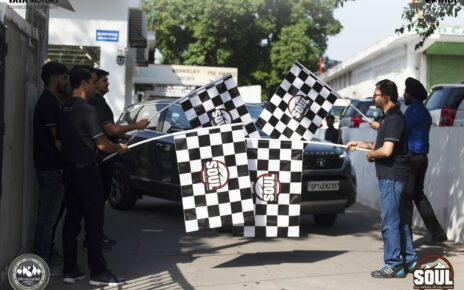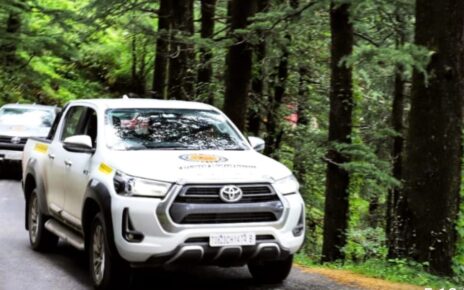Toyota has just taken the wraps off its attractive-looking Yaris sedan, a car it will manufacture and sell in India come the middle of May. While the Yaris is a global product, this sedan version, mainly sold in ASEAN and developing markets, has the Honda City squarely in its sights. Configured to be more in line with the tastes of car buyers here, the sedan in its current form is all but tailor-made for India. And this is no half-hearted attempt at gaining market share; the Japanese company won’t just assemble it here, it will manufacture it. Most of the body panels will be stamped in Bengaluru and even the engine will be put together using many locally sourced components.
What will draw plenty of buyers to the car are its mini Corolla looks. There’s little doubt that this is an attractive car, but what makes it truly stand out is that it comes loaded with plenty of interesting details. Take the high-mounted headlight elements; they look stunning. The big black air dam makes the car look sporty and then there’s the arched roof. Even the well-proportioned rear is quite attractive.
There isn’t much choice, however, when it comes to powertrain. Initially, all cars will be powered by just one engine – a 108hp, 1.5-litre petrol mated to a six-speed manual and a seven-speed (step) CVT-based automatic gearbox. This engine gets tech like dual variable valve timing to give it a strong performance as well as good pulling power at low engine speeds. A diesel engine hasn’t been totally ruled out for the future, but the way things are headed, Toyota admits it could be a hybrid powertrain that makes it to our shores first.
Dimensionally, the Yaris is a bit shorter than the Honda City, and the City has the longer wheelbase too. But like its sister car, the Etios, the sedan is wider, and that will mean a wider cabin.
Under the skin, the sedan is based on Toyota’s global ‘B’ platform, and uses a McPherson strut front suspension and a non-independent torsion beam rear, with anti-roll bars at both ends. The ride height of the car has been altered for Indian roads; it now gets taller springs and stiffer dampers (to compensate), and India-spec cars also get smaller 15-inch wheels due to our bad roads. And, as on the City, Toyota has kept the tyre width down too, the Yaris only gets 185 section tyres, to help it achieve a high fuel-efficiency number that’s so important in India. Toyota engineers have also added a lot of sound-deadening material to help reduce road noise; there are additional bits on the floor, in the door pads and on the firewall as well.
“We have focussed specifically on enhancing the quietness in the cabin for the India-specific car over the model sold in markets such as Thailand. This is because the road condition is rougher than in other markets. Sound deadners have been added under the wheel arches and there is addition of asphalt under the floor of the vehicle,” Takatomo Suzuki, chief engineer – Yaris, told Autocar India.
And the Japanese company is deadly serious about safety too; the car will come with a class-leading seven airbags, including a knee bag, disc brakes on all four wheels (currently the only one in its class), get ESP, traction control and even a tyre pressure monitoring system. Little wonder then that a similarly specified car has been awarded a five-star rating by NCAP for ASEAN countries.
On the inside, the cabin is typical Toyota – it looks like a Corolla even from the inside. The design of the steering wheel is familiar, and so is the centre console with thick bands of chrome flanking the smallish touchscreen, but Toyota designers have also spruced up the cabin considerably. The fit and finish are commendable and quality levels are similar to those in the City. The two-tone dash works well and, as always, basic functionality is first rate with plenty of cupholders and bins around the cabin. Even the touch-sensitive air-con controls work well, the colour display inside the instrument panel is of a fair size and the cooled glovebox is reasonably large too. Wish the touchscreen was a bit bigger and bit less aftermarket looking though. Notably, the Yaris does not have a direct USB slot though Toyota does offer one via the audio system. The sedan gets three 12V power outlets, two in the back and one in the front.
The front seats, however, are extremely comfortable. Side bolstering is nice, the range of adjustment is excellent and it is easy to find a good driving position. Rear seat comfort is also good. There’s a fair amount of legroom, the seat base is nice and long, the backrest is nicely reclined and the cushioning on the part-leather seats is also spot on. Headroom at the rear, however, will be tight if you are over six feet tall, and though the Yaris does have a good back seat, it isn’t nearly as nice as that of the Honda City. Also, while the floor of the cabin is flat, the elbow box does intrude into where the third passenger will be sat.
Toyota has added a roof-mounted air-con system, and this will improve airflow to the rear seats on a hot day. You get your own digi controls at the back and the blower speed is impressive. The unit, however, looks quite aftermarket, and its presence means you can’t have a sunroof. The boot however, is extremely practical. The rear seats split and fold for more space and practicality, the loading lip isn’t too high, and, this time around, Toyota has added some much-needed cladding to the underside of the boot lid.
Toyota is expected to price the Yaris competitively with the Honda City, somewhere in the region of Rs 8.4 lakh – Rs 13.5 lakh, ex showroom Delhi (slightly below the City). This will give it a fighting chance when squared up against the popular Honda and will allow it to also compete with the aggressively priced Maruti Ciaz, which also has a decent market share. And then there’s Toyota’s reputation for bulletproof reliability and first-class service.
What the company will also bank on is the fact that this car will be extremely well equipped with some segment firsts like a powered driver’s seat and front parking sensors. And then there’s the electronic stability control, a tyre pressure monitoring system, seven airbags and a sunblind in the rear. It isn’t very flashy or wildly exciting, but Toyota’s baby Corolla is well thought out and practical, and that will make it extremely competitive. The City is likely to have a tough fight on its hands.




